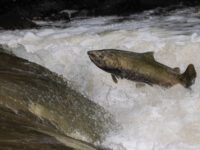Dear Dr. Forsythe: My kitten constantly gets into my houseplants and tries digging in them. Someone told me to use cayenne pepper to keep her out, but I don’t want to irritate her, just keep her from getting in there. She digs and chews on the plants. Do you have any suggestions?
Mrs. S, Sonoma
Dear Mrs. S: Some people feel that cats are just too independent to train, but I believe it’s possible to teach these magnificent animals how to interact inside the home. Most cat owners agree that felines are superior creatures to all other beasts, but they do often display an attitude of “indifference” with respect to obeying (or even caring about pleasing) their human. A few of my clients have had success with the use of a closely placed spray bottle, used to quickly spritz the cat whenever he or she steps into the planter. Some cats don’t respond to discipline, but others do. For those who are trainable, it may help to keep a small crate near the plants and place the kitty inside the crate for a five-minute “time out” immediately after she gets into the planter and gets the “spritz.” This may help her learn that the planter is a “no-no.”
Deterrents also work well to prevent a pussycat from getting into the plant. If hanging the plants is not possible, using rock-mulch as a top layer upon the soil will reduce the comfort and lessen the desire to step on and dig in the dirt. Placing several toothpicks into the soil will discourage the pet as well since cats detest the tips making contact with their paws. In addition, placing a piece of window screen around the base of the plant will prevent digging in the dirt but still allow for watering. A couple of the best repellants include mothballs, which can be placed right on the topsoil, and spraying the leaves with Bitter Apple spray to make them unpalatable.
Some people recommend sprinkling cayenne pepper on the soil and leaves to repel cats. I have had little success with this, however. Many of my clients and I agree that this hot, pungent and biting spice has a better use in seafood, soups and hors d’oeuvres. Hopefully this information will help you with this important kitty problem while also reminding you that cayenne pepper can add piquancy to many of your favorite stews and casseroles.
Dr. F
Dear Dr. Forsythe: Will you please let your readers know that it is OK for some breeds of dogs to be fatter than others. Everyone knows that bulldogs get a little chubbier than other dogs and French bulldogs store fat for the winter. My cousin knew a vet in Mexico who told her about this, and I wanted to share this information with your readers. Thank you for the column.
Winters in Mexico
Dear Winters: I believe that the information your cousin received from the Mexican veterinarian was not accurate. I know of no breed of dog that should be allowed to get fat, least of all bulldogs, which tend to have breathing problems even when they don’t have a weight problem. Even huskies, used as mushers in the grueling 1,000 Mile Iditarod race through Alaska, are kept at an ideal body condition score (BCS) rather than allowed to stockpile fat prior to their race. In short, I’m afraid your cousin was fed a line, so you need to know that it is important to keep all breeds of dogs in a good, normal body condition. One way of checking this is to gently press in on the rib cage; you should be able to feel the ribs with gentle pressure. If you need to press hard, there is too much body fat.
I’m surprised that a veterinarian would tell someone that dogs should be allowed to get fat – this is about as wise as tap dancing in the bathtub or sticking a metal fork in a light socket – not so advisable! So if you happen to be fortunate to know someone with a bulldog, they should keep him trim and he’ll live longer and be healthier.
Thanks and good luck.
Dr. F.







Be First to Comment